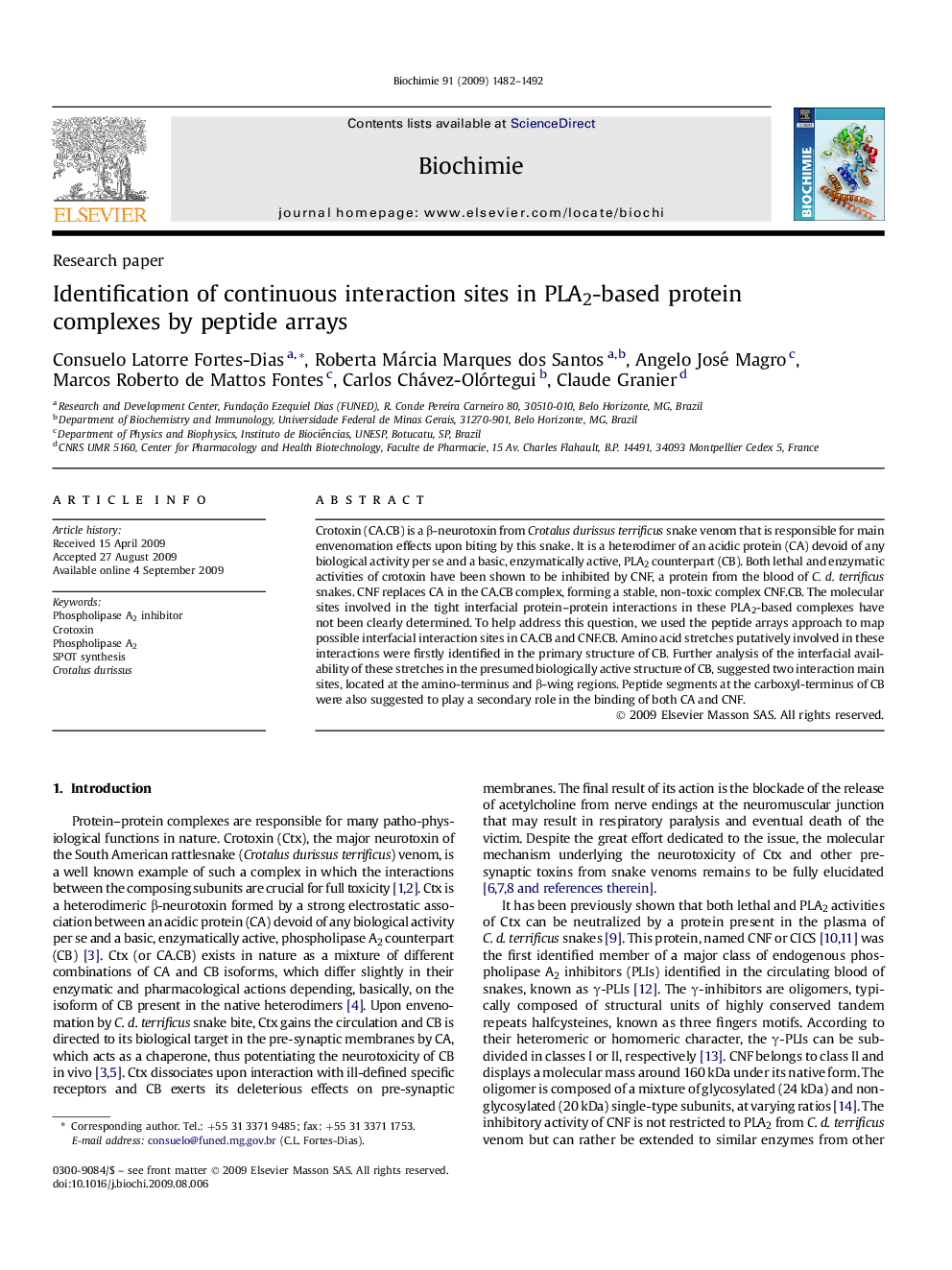| Article ID | Journal | Published Year | Pages | File Type |
|---|---|---|---|---|
| 1952327 | Biochimie | 2009 | 11 Pages |
Crotoxin (CA.CB) is a β-neurotoxin from Crotalus durissus terrificus snake venom that is responsible for main envenomation effects upon biting by this snake. It is a heterodimer of an acidic protein (CA) devoid of any biological activity per se and a basic, enzymatically active, PLA2 counterpart (CB). Both lethal and enzymatic activities of crotoxin have been shown to be inhibited by CNF, a protein from the blood of C. d. terrificus snakes. CNF replaces CA in the CA.CB complex, forming a stable, non-toxic complex CNF.CB. The molecular sites involved in the tight interfacial protein–protein interactions in these PLA2-based complexes have not been clearly determined. To help address this question, we used the peptide arrays approach to map possible interfacial interaction sites in CA.CB and CNF.CB. Amino acid stretches putatively involved in these interactions were firstly identified in the primary structure of CB. Further analysis of the interfacial availability of these stretches in the presumed biologically active structure of CB, suggested two interaction main sites, located at the amino-terminus and β-wing regions. Peptide segments at the carboxyl-terminus of CB were also suggested to play a secondary role in the binding of both CA and CNF.
